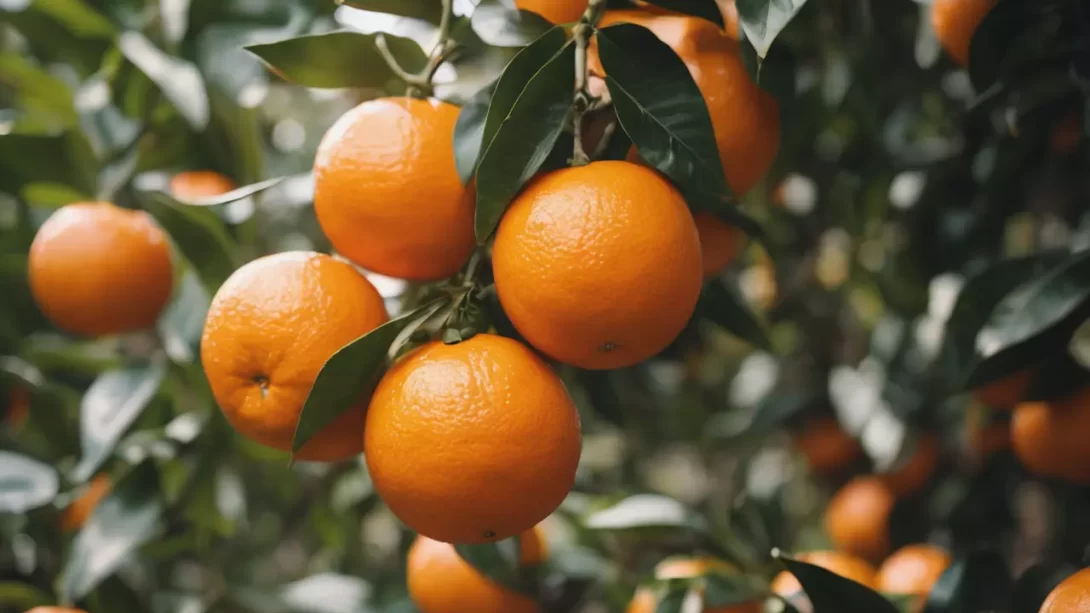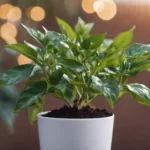Tangerines are a beloved citrus fruit known for their sweet flavor and easy-to-peel skin. They are a popular choice for a healthy snack, rich in vitamins and nutrients. Understanding the seasonality of tangerines is important for consumers looking to enjoy these fruits at their peak flavor. This article aims to shed light on when tangerines are in season and the factors that influence their harvest time.
Tangerines
Tangerines are small, orange-colored citrus fruits belonging to the mandarin family. They are sweeter and less acidic than oranges and are recognized for their distinctive loose skin, which makes them easy to peel. There are several varieties of tangerines, including clementines and satsumas, each with unique characteristics in terms of size, taste, and peelability. Compared to other citrus fruits, tangerines are smaller, sweeter, and have a less sour taste.
Tangerine Seasonality
Tangerines are typically in season during the cooler months of the year. Their growing season and harvest time are influenced by several factors, including climate, geographical location, and specific variety. Generally, tangerine trees thrive in subtropical climates where there is a combination of warm days and cool nights.
Peak Seasons for Tangerines
In the United States, the peak season for tangerines is from fall through winter, with the majority of the harvest occurring between November and February. In Mediterranean countries, which are also major producers, the season may slightly vary but generally falls within the same timeframe. The exact timing of the peak season can vary from year to year based on weather conditions and regional climate differences.
During the peak season, tangerines are at their best in terms of flavor, juiciness, and nutritional content. They are also more abundant and, as a result, often more affordable in the market.
Tangerines in Off-Season
While tangerines are most abundant and flavorful during their peak season, advances in agricultural practices have made it possible to find them outside of these traditional months. Greenhouse growing and international imports can provide tangerines during off-peak times, although these fruits might not always match the taste and quality of those harvested in season. Off-season tangerines may also come at a higher price due to the increased costs of production and transportation.
Choosing and Storing Tangerines
Selecting the best tangerines during their peak season involves looking for fruits that are firm to the touch with a glossy, deep orange skin. They should feel heavy for their size, indicating juiciness. Avoid tangerines that have soft spots, blemishes, or a dull color, as these are signs of overripeness or poor quality.
Once purchased, tangerines should be stored properly to maintain their freshness. They can be kept at room temperature for a few days, making them a convenient snack. For longer storage, placing them in the refrigerator can extend their freshness for up to two weeks. It’s important to keep them in a well-ventilated container or a produce drawer to prevent moisture accumulation, which can lead to spoilage.
Tangerines and Their Nutritional Benefits
Consuming tangerines during their peak season not only ensures a better taste experience but also maximizes their nutritional benefits. Tangerines are an excellent source of vitamin C, which is crucial for immune health, skin health, and iron absorption. They also contain dietary fiber, which aids in digestion, and antioxidants like flavonoids and carotenoids that contribute to overall health.
The seasonal consumption of tangerines aligns with the body’s natural need for vitamin C during the colder months, making them an ideal winter fruit. Additionally, enjoying fruits in season can contribute to a more sustainable and environmentally friendly diet.
Conclusion
Understanding the seasonality of tangerines is key to enjoying these citrus fruits at their best. Typically in season during the cooler months, from fall to early spring, tangerines offer a burst of sweet, tangy flavor and a wealth of nutritional benefits when consumed at their peak. With the advent of modern agricultural techniques and global trade, it is possible to find tangerines outside of their traditional season, but the best quality and flavor are usually experienced during their natural harvest time.
Selecting the best tangerines involves looking for fruits with a vibrant orange color, firm texture, and a heavy feel. Proper storage, either at room temperature for immediate consumption or in the refrigerator for extended freshness, ensures that the tangerines retain their taste and nutritional value. Consuming tangerines during their peak season not only provides an exceptional sensory experience but also aligns with the body’s increased need for nutrients like vitamin C during colder times of the year.
In summary, tangerines are a delightful and healthful addition to the diet, especially when enjoyed in their natural season. Whether savored as a fresh snack, added to salads, or used in recipes, these fruits bring a touch of sweetness and a range of health benefits. By choosing tangerines in their prime season, consumers can enjoy the best in taste while supporting sustainable and seasonal eating practices.




